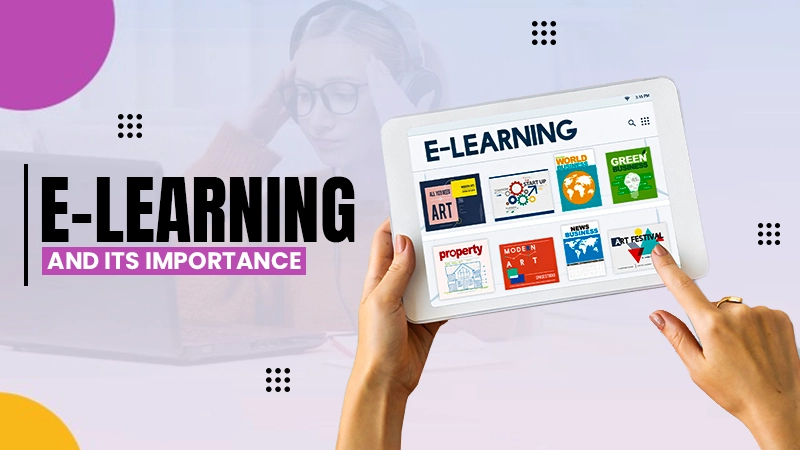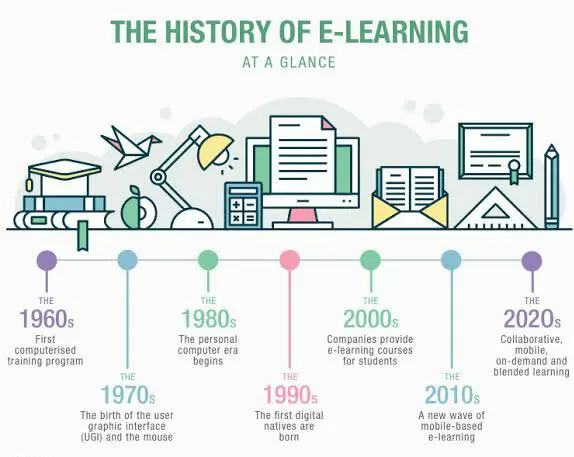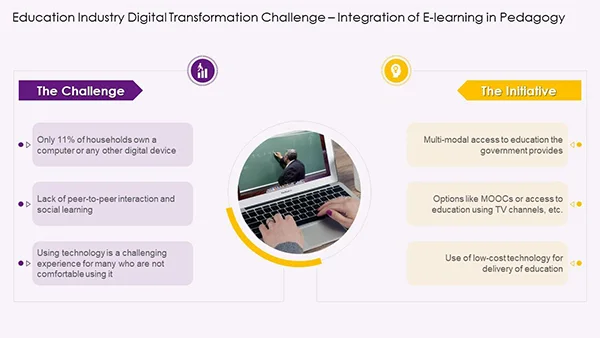
The concept of online education isn’t new in education thanks to the constant progress of digitization.
Now, students can attend classrooms from wherever they want through their smartphones or laptop.
Therefore, e-learning is simply electronic learning where a connected device with a strong internet network provides educational materials online.
Though several people were skeptical when it was launched, covid lockdown made it necessary to experiment with the digital educational platforms.
It has transformed the traditional classroom into a creative playground that could be accessed while lounging at home or when traveling.
The importance of e-learning in education has garnered international attention, which we are going to explore in this article.
Understanding What is E-Learning
Imagine a student living in a remote area is attending a classroom via his or her smartphone through a 5G network.
This was once thought to be science fiction but is now a reality. The integration of tech and education has proved to be a positive collaboration removing the issues of physical barriers.
Let’s look at how it started to develop from early teaching machines to using AI for assisting educators.
Historical Development

In 1924, the first ‘Teaching Machine’ was invented by Ohio State University professor Sidney Pressey for electronic learning.
However, the real surge of computerized training programs began in the 1960s. As communication evolved from radio to CD-ROM courses, the use of PCs for gaining knowledge became common.
It has bridged the gap of accessibility by offering a convenient lens to gain knowledge of the world.
Types of E-Learning
The transformation in the education sector has many communication channels which explore different types of e-learning modules.
Here are the two primary types:
Synchronous E-Learning
You attend a virtual classroom like set up organized through a live session or a webinar. This is synchronous e-learning. Here are its benefits:
Real-Time Interaction: Students can ask questions, participate in discussions, and get immediate feedback from teachers.
Scheduled Sessions: Structured educational environment keeps learners organized and improves their focus.
Engaging Multimedia: Teachers can use multimedia elements and collaborative tools to engage children, improving active interactions.
Asynchronous E-Learning
In Asynchronous e-learning teachers provide pre-recorded course materials making it convenient for students with busy schedules or different time zones.
The advantages of this type of e-learning are:
- Self-Paced Learning: Every student has a different studying capability, therefore, asynchronous e-learning allows them to understand difficult concepts by revising familiar content.
- Diverse Resources: Learners can access diverse resources easily such as video lectures, quizzes, and interactive activities.
- Community Building: Through forums and social media groups, helps connect with fellow learners to share insights.
THINGS TO CONSIDER
Gamification is a type of e-learning where strategic game elements are used like points, badges, or leadership boards to enhance the overall studying experience.
E-Learning Technologies
Through diverse devices and methods, online schooling offers a creative medium to understand subjects.
Not just multimedia but tools like animations can explain complex ideas. LMS or Learning Management Systems are utilized to track progress and interact with tutors as well as classmates.
Moreover, customizing study plans based on a student’s capabilities ensures inclusivity.
For example, the online courses offered by Distance Learning Centre provide a wide range of courses to support your educational success.
The Importance of E-Learning in Education
E-learning has opened many doors of opportunities by integrating automation and high-speed internet access.
The importance of online courses is felt worldwide as more students continue their education virtually.

STATISTICS
The graph shows the global Learning Management System market growth since 2022, which is forecasted for a consistent growth till 2028.
Here are the advantages of e-learning in education:
- In a busy city or a remote countryside, you can gain a wealth of knowledge with international universities providing professional certifications to full degree programs.
- Through customization, learners can understand each subject according to their culture and background.
- The biggest advantage of online classrooms is cost-effectiveness. It saves commuting expenses. Several free resources available online motivate learners to gather knowledge easily.
Challenges and Solutions

E-learning is riding the waves of international growth with even the developing nations trying different setups to provide access to virtual education to students.
Overcoming Technological Barriers
Adopting digital education isn’t easy for developing nations since they don’t have the basic infrastructures to access tech mediums.
Despite these challenges, the varied government investments, are assisting educators and learners by providing the following:
- Fiber optic connectivity between regions.
- Increased competition between telecom and ISPs will result in lowered costs to attract customers.
What industry experts can ensure are:
- Listing down minimal requirements for essential tech tools and devices.
- Offer training to local teachers through proper guidance, troubleshooting common issues, and promote skill development.
Ensuring Academic Integrity
The biggest threat to the educational industry are from cyberattacks and ensuring integrity of the provided information.
- Proper training should be offered to educationists to ensure personal information of students is secure.
- The unethical use of AI for completing projects should be discouraged in favor of independent research capability.
- Clear guidelines should be provided to maintain academic honesty with outlines for the consequences of misconduct.
Reach Higher Heights Through E-Learning
As the world is rapidly progressing towards a virtual reality, it is important to ensure that the education of students doesn’t suffer.
The relevance of utilizing technology is only for assisting humans and not depending on online resources all the time.
In such a scenario, the importance of e-learning has a bigger responsibility to use tools like LMS with integrity, paving the way for well-educated students.